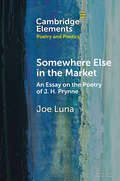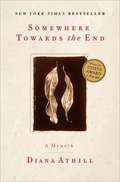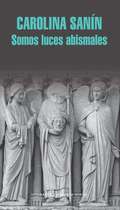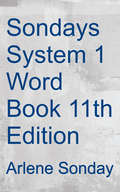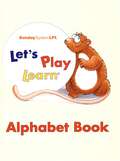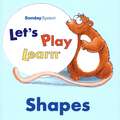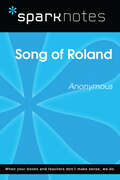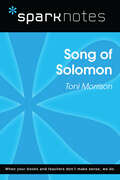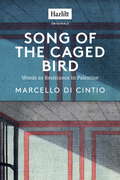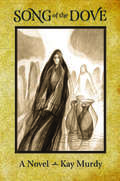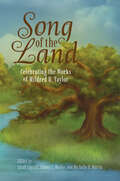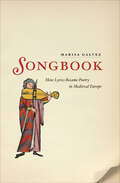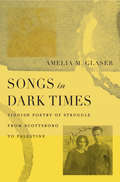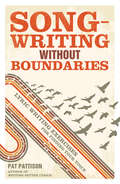- Table View
- List View
Somewhere Close to Happy: The heart-warming, laugh-out-loud debut of the year
by Lia LouisA laugh-out-loud funny yet heart-breaking novel about first love and second chances, with a satisfying mystery at its heart.Lizzie James is happy. She has a steady office job (with a steady stream of tray bakes), has had the same best friend since secondary school, and she sees her family every Thursday night for take-away and TV soaps. Granted, some members of her family she'd rather not see, and they definitely don't want to see her after what happened back then... But on the whole she's happy. Or somewhere close to it, anyway. Until a letter arrives one day from her best friend, Roman. A letter dated 12 years ago, the exact day he went missing. It brings all her painful memories flooding back: the new school she had to go to when she was ill, losing her beloved granddad, Hubble, and then losing her first love. As Lizzie uncovers the secrets of the letter, she starts to discover what really happened the year her life fell apart - and all avenues lead back to Roman.Who sent her the letter, and what happened to Roman?Perfect for fans of Cecelia Ahern, Jojo Moyes, Giovanna Fletcher and Kate Eberlen's Miss You. This is a novel you won't soon forget.(p) Orion Publishing Group Ltd 2019
Somewhere Else in the Market: An Essay on the Poetry of J. H. Prynne (Elements in Poetry and Poetics)
by Joe LunaThis Element develops a close reading of 'Britain's leading late modernist poet', J.H. Prynne. Examining the political and literary contexts of Prynne's work of the 1980s, the Element offers an intervention into the existing scholarship on Prynne through close attention to the ways in which his poems respond to the social and political forces that define both modern Britain and the wider world of financialized capitalism.
Somewhere Towards the End
by Diana AthillFar from the carefree advertising image of grey power Saga holidays, this is the process of approaching the end, with all its grisly possibilities. Athill, at least, has reached the age of 90 with precious few regrets about her life.
Somos luces abismales
by Carolina SaninOcho ensayos originales y sorprendentes de Carolina Sanín. En Somos luces abismales, Carolina Sanín se sumerge en sus recuerdos, en sus lecturas y sobre todo en el lenguaje para descubrir, comprender y cuestionar distintas facetas del mundo y de ella misma. Estos textos inclasificables, a la vez eruditos, intimistas, tiernos, poéticos, divertidos, irónicos, francos, de una ilación matemática y una sensibilidad profunda, ofrecen una experiencia única de lectura y perfilan a su autora como una de las voces más singulares de la literatura colombiana contemporánea. La crítica ha dicho... 'Una quisiera susurrar ciertas frases para sentir el ritmo subterráneo que marca el encuentro entre las palabras, la memoria y la imaginación, y que hace que la lectura de los textos de Carolina Sanín atraviese tanto la contemplación como la fábula'. Gabriela Alemán 'En este libro Sanín se revela como una escritora cuya forma de lucidez es la poesía. Cada palabra es un placer'. Alma Guillermoprieto 'Aquí se camina con audacia por mundos ambiguos y cambiantes, buscando sin sosiego asomarse a aquello que no cambia nunca'. Tomás González 'Los límites entre el exterior y el interior, los ciclos del tiempo, las ideas heredadas sobre la manera como habita un cuerpo el espacio: todo parece estallar y convertirse en pregunta en los textos de Carolina Sanín. Y es la escritura, y solo ella, la que emprende la búsqueda de sentido, la que decide volver a nombrar desde el principio. La originalidad de su indagación y la casi inconcebible belleza de su español hacen de Sanín una de las grandes escritoras de nuestro tiempo'. Marianne Ponsford
Son of Gun in Cheek: An Affectionate Guide to More of the "Worst" in Mystery Fiction
by Bill PronziniA humorous and good-natured study of alternative crime fiction, the Edgar Award-nominated Gun in Cheek celebrated the neglected classics of substandard mystery writing. After years of additional research into comically awful literature, author Bill Pronzini returns with Son of Gun in Cheek, a compendium of even more twisted treasures for connoisseurs of hideous prose. Pronzini's lively commentary offers background on each of the stories he cites, providing an informative survey of the genre and its writers, crowned with hilarious excerpts. His lighthearted look at the best of the worst in crime fiction will amuse not only mystery buffs but also anyone with a taste for ham-handed drama.
Son of Yahweh: The Gospels As Novels
by Clarke W. OwensAnyone who has ever spent time in a Christian church knows that the gospels are never read as a series of ordered events forming a narrative whole. Instead they are read with dogged incoherence, focusing on tiny snippets taken out of context. The birth stories of Matthew and Luke are emphasized at Christmas; the stone rolls away from the tomb at Easter. The gospels are used in churches only as occasional readings, lections, chapters and verses which are dipped into for liturgical moments. If we understand them that way, it makes no difference whether Peter and John observe Jesus raising a dead girl in one chapter and in the next seem dumbfounded by the very concept of resurrection. That juxtaposition is dramatically incoherent only if we assume that meaning derives from the order of events in a story that is read as a whole; that is, as a literary fiction. Reading the gospels as novels raises questions about how we think of fiction, how we think of history, and how we think of religion. Critical reading opens windows to truth claims at basic levels: the level of the definition of the text, the level of when and how it was composed, the level of form or genre. These are questions for the literary critic, and they lead to factual conclusions, including the author's conclusion that crucifixion and resurrection are allegories for the destruction of Jewish culture in Jerusalem in 70 C.E. and the rebirth of that culture in the form of a Hellenized and de-tribalized Judaic offshoot, Christianity.
Sonday System 1®: Word Book
by Arlene SondayOrton-Gillingham based, multisensory, structured reading, writing and spelling.
Sonday System LPL Alphabet Book
by Arlene SondayA multisensory early childhood and intervention program for pre-reading, early reading. It has colorful illustrations featuring letter alliterations for practicing phonological awareness.
Sonday System LPL Shapes and Numbers Book
by Arlene SondayA multisensory early childhood and intervention program for pre-reading, early reading, shapes and early numeracy skills. It includes colorful illustrations that introduce beginning shapes and numbers 1-10 for reinforcing skills such as sorting, sequencing and pattern recognition.
Song from the Land of Fire: Azerbaijanian Mugam in the Soviet and Post-Soviet Periods (Current Research In Ethnomusicology: Outstanding Dissertations Ser. #6)
by Inna NaroditskayaSong from the Land of Fire explores Azerbaijanian musical culture, a subject previously unexamined by American and European scholars. This book contains notations of mugham performance--a fusion of traditional poetry and musical improvisation--and analysis of hybrid genres, such as mugham-operas and symphonic mugham by native composers. Intimately
Song of Ourselves: Walt Whitman and the Fight for Democracy
by Mark EdmundsonIn the midst of a crisis of democracy, we have much to learn from Walt Whitman’s journey toward egalitarian selfhood. Walt Whitman knew a great deal about democracy that we don’t. Most of that knowledge is concentrated in one stunning poem, Song of Myself. Esteemed cultural and literary thinker Mark Edmundson offers a bold reading of the 1855 poem, included here in its entirety. He finds in the poem the genesis and development of a democratic spirit, for the individual and the nation. Whitman broke from past literature that he saw as “feudal”: obsessed with the noble and great. He wanted instead to celebrate the common and everyday. Song of Myself does this, setting the terms for democratic identity and culture in America. The work captures the drama of becoming an egalitarian individual, as the poet ascends to knowledge and happiness by confronting and overcoming the major obstacles to democratic selfhood. In the course of his journey, the poet addresses God and Jesus, body and soul, the love of kings, the fear of the poor, and the fear of death. The poet’s consciousness enlarges; he can see more, comprehend more, and he has more to teach. In Edmundson’s account, Whitman’s great poem does not end with its last line. Seven years after the poem was published, Whitman went to work in hospitals, where he attended to the Civil War’s wounded, sick, and dying. He thus became in life the democratic individual he had prophesied in art. Even now, that prophecy gives us words, thoughts, and feelings to feed the democratic spirit of self and nation.
Song of Roland (SparkNotes Literature Guide Series)
by SparkNotesSong of Roland (SparkNotes Literature Guide) Making the reading experience fun! Created by Harvard students for students everywhere, SparkNotes is a new breed of study guide: smarter, better, faster. Geared to what today's students need to know, SparkNotes provides: *Chapter-by-chapter analysis *Explanations of key themes, motifs, and symbols *A review quiz and essay topicsLively and accessible, these guides are perfect for late-night studying and writing papers
Song of Solomon (SparkNotes Literature Guide Series)
by SparkNotesSong of Solomon (SparkNotes Literature Guide) by Toni Morrison Making the reading experience fun! Created by Harvard students for students everywhere, SparkNotes is a new breed of study guide: smarter, better, faster. Geared to what today's students need to know, SparkNotes provides: *Chapter-by-chapter analysis *Explanations of key themes, motifs, and symbols *A review quiz and essay topicsLively and accessible, these guides are perfect for late-night studying and writing papers
Song of the Caged Bird
by Marcello Di CintioFor political readers and anyone invested in the Israeli-Palestinian conflict, Marcello Di Cintio's Song of the Caged Bird is a refreshing look at Palestinian resistance--through literature and the power of books. When Marcello Di Cintio began teaching at the Palestine Writing Workshop in Ramallah, he avoided making reference to the occupation in his assignments at first--to see if his students addressed it on their own--and he soon learned that it touches all aspects of Palestinian life. Curious how Palestinian literature could operate with its people so tied to a single narrative, Di Cintio began a journey through the Palestinian world of books: from the monument to the poet Mahmoud Darwish to the volumes in the Nablus Prisoners' library; from one of the West Bank's most successful bookshops to a century-old library in Jerusalem run by a family with a lineage in that city many centuries older. What he found is a world of identity and resistance that is considerably more complex--and potentially more hopeful--than what we see splashed across our screens.
Song of the Dove
by Kay MurdyHere is the story of a Jewish woman of the first century, Miryam of Natzeret, who lived in a time village nestled in the hills of Yisreal at the western end of the Mediterranean Sea. She had parents, friends, a husband, a son, and she struggled to understand the strange things happening to her in a time and a place with more than its share of turmoil, both political and religious. What happened tested both her faith and courage.
Song of the Land: Celebrating the Works of Mildred D. Taylor (Children's Literature Association Series)
by Michelle H. Martin Tammy L. Mielke Sarah LayzellContributions by Jennifer Ansbach, Jani L. Barker, Melissa Bedford, Helen Bond, Wanda M. Brooks, Susan Browne, Sabrina Carnesi, Emily Cardinali Cormier, Y. Falami Devoe, Bahar Eshraq, Latrice Ferguson, Catharine Kane, Michelle H. Martin, Devika Mehra, Ngozi Onuora, Lauren Rizzuto, Shelly Shaffer, Bryanna Tidmarsh, Ann Van Wig, Annette Wannamaker, and Raen Parker WashingtonA major figure in African American children’s literature, Mildred D. Taylor (b. 1943) has been publishing groundbreaking, award-winning books for fifty years, including Roll of Thunder, Hear My Cry; Song of the Trees; Let the Circle Be Unbroken; The Friendship; The Road to Memphis; and The Land. Taylor’s renowned Logan family saga has become a staple in classrooms and libraries, resonating internationally with its profound impact on readers. Her significance in literature extends beyond captivating storytelling. She has effectively illuminated the struggles and triumphs of African American families, challenging societal norms and shedding light on historical injustices. Through compelling narratives rooted in personal experiences and family history, Taylor has enriched the literary landscape and sparked crucial conversations about race, resilience, and the enduring power of love and courage in the face of adversity.Yet her significant literary contributions have not received the critical recognition they deserve. Seeking to fill that gap, Song of the Land: Celebrating the Works of Mildred D. Taylor brings together creative and critical responses to Taylor’s work and ongoing legacy. The chapters in this anthology represent an array of disciplines and theoretical lenses, highlighting the impact of African American children’s literature. Song of the Land is an invitation to learn more about Taylor’s work, which lays bare the dangers of white supremacy and racism in American society.
Songbook: How Lyrics Became Poetry in Medieval Europe
by Marisa GalvezToday we usually think of a book of poems as composed by a poet, rather than assembled or adapted by a network of poets and readers. But the earliest European vernacular poetries challenge these assumptions. Medieval songbooks remind us how lyric poetry was once communally produced and received—a collaboration of artists, performers, live audiences, and readers stretching across languages and societies. The only comparative study of its kind, Songbook treats what poetry was before the emergence of the modern category “poetry”: that is, how vernacular songbooks of the thirteenth to fifteenth centuries shaped our modern understanding of poetry by establishing expectations of what is a poem, what is a poet, and what is lyric poetry itself. Marisa Galvez analyzes the seminal songbooks representing the vernacular traditions of Occitan, Middle High German, and Castilian, and tracks the process by which the songbook emerged from the original performance contexts of oral publication, into a medium for preservation, and, finally, into an established literary object. Galvez reveals that songbooks—in ways that resonate with our modern practice of curated archives and playlists—contain lyric, music, images, and other nonlyric texts selected and ordered to reflect the local values and preferences of their readers. At a time when medievalists are reassessing the historical foundations of their field and especially the national literary canons established in the nineteenth century, a new examination of the songbook’s role in several vernacular traditions is more relevant than ever.
Songbook: How Lyrics Became Poetry in Medieval Europe
by Marisa GalvezHow medieval songbooks were composed in collaboration with the community—and across languages and societies: &“Eloquent…clearly argued.&”—Times Literary Supplement Today we usually think of a book of poems as composed by a poet, rather than assembled or adapted by a network of poets and readers. But the earliest European vernacular poetries challenge these assumptions. Medieval songbooks remind us how lyric poetry was once communally produced and received—a collaboration of artists, performers, live audiences, and readers stretching across languages and societies. The only comparative study of its kind, Songbook treats what poetry was before the emergence of the modern category poetry: that is, how vernacular songbooks of the thirteenth to fifteenth centuries shaped our modern understanding of poetry by establishing expectations of what is a poem, what is a poet, and what is lyric poetry itself. Marisa Galvez analyzes the seminal songbooks representing the vernacular traditions of Occitan, Middle High German, and Castilian, and tracks the process by which the songbook emerged from the original performance contexts of oral publication, into a medium for preservation, and, finally, into an established literary object. Galvez reveals that songbooks—in ways that resonate with our modern practice of curated archives and playlists—contain lyric, music, images, and other nonlyric texts selected and ordered to reflect the local values and preferences of their readers. At a time when medievalists are reassessing the historical foundations of their field and especially the national literary canons established in the nineteenth century, a new examination of the songbook&’s role in several vernacular traditions is more relevant than ever.
Songs in Dark Times: Yiddish Poetry Of Struggle From Scottsboro To Palestine
by Amelia M. GlaserA probing reading of leftist Jewish poets who, during the interwar period, drew on the trauma of pogroms to depict the suffering of other marginalized peoples.Between the world wars, a generation of Jewish leftist poets reached out to other embattled peoples of the earth—Palestinian Arabs, African Americans, Spanish Republicans—in Yiddish verse. Songs in Dark Times examines the richly layered meanings of this project, grounded in Jewish collective trauma but embracing a global community of the oppressed.The long 1930s, Amelia M. Glaser proposes, gave rise to a genre of internationalist modernism in which tropes of national collective memory were rewritten as the shared experiences of many national groups. The utopian Jews of Songs in Dark Times effectively globalized the pogroms in a bold and sometimes fraught literary move that asserted continuity with anti-Arab violence and black lynching. As communists and fellow travelers, the writers also sought to integrate particular experiences of suffering into a borderless narrative of class struggle. Glaser resurrects their poems from the pages of forgotten Yiddish communist periodicals, particularly the New York–based Morgn Frayhayt (Morning Freedom) and the Soviet literary journal Royte Velt (Red World). Alongside compelling analysis, Glaser includes her own translations of ten poems previously unavailable in English, including Malka Lee’s “God’s Black Lamb,” Moyshe Nadir’s “Closer,” and Esther Shumiatsher’s “At the Border of China.”These poets dreamed of a moment when “we” could mean “we workers” rather than “we Jews.” Songs in Dark Times takes on the beauty and difficulty of that dream, in the minds of Yiddish writers who sought to heal the world by translating pain.
Songs of Innocence and Experience (SparkNotes Literature Guide Series)
by SparkNotesSongs of Innocence and Experience (SparkNotes Literature Guide) by William Blake Making the reading experience fun! Created by Harvard students for students everywhere, SparkNotes is a new breed of study guide: smarter, better, faster. Geared to what today's students need to know, SparkNotes provides: *Chapter-by-chapter analysis *Explanations of key themes, motifs, and symbols *A review quiz and essay topicsLively and accessible, these guides are perfect for late-night studying and writing papers
Songs of Silence
by Curdella ForbesThere have been many great and enduring works of literature by Caribbean authors over the last century. The Caribbean Contemporary Classics collection celebrates these deep and vibrant stories, overflowing with life and acute observations about society.'Falling in the spaces between knowing and not knowing, between silence and not speaking'Told from the perspective of Marlene, Songs of Silence is a vivid collection of reflections and recollections that meander through life in rural Jamaica, observing the lives and bonds of its colourful, boisterous inhabitants. Rich, poetical and profoundly contemplative, the recollections transcend the gossip and intrigue, the unsaid thoughts and silences, to ossify in a maturation of selfhood. It is not the 'Bam! Baddam!' of Papacita but rather the murmur of the river, this inexplicable river, and its cool morning misty silence that settles across this collection, singing to it and to the reader in a thoughtful lull and soft hum.
Songs of Silence (Caribbean Modern Classics)
by Dr Curdella ForbesThere have been many great and enduring works of literature by Caribbean authors over the last century. The Caribbean Contemporary Classics collection celebrates these deep and vibrant stories, overflowing with life and acute observations about society.'Falling in the spaces between knowing and not knowing, between silence and not speaking'Told from the perspective of Marlene, Songs of Silence is a vivid collection of reflections and recollections that meander through life in rural Jamaica, observing the lives and bonds of its colourful, boisterous inhabitants. Rich, poetical and profoundly contemplative, the recollections transcend the gossip and intrigue, the unsaid thoughts and silences, to ossify in a maturation of selfhood. It is not the 'Bam! Baddam!' of Papacita but rather the murmur of the river, this inexplicable river, and its cool morning misty silence that settles across this collection, singing to it and to the reader in a thoughtful lull and soft hum.
Songs of a Friend
by Barbara Hughes FowlerPortugal enjoyed one of the richest and most sophisticated cultures of the Middle Ages, in part because of its vibrant secular literature. One popular literary genre of the twelfth and thirteenth centuries was the cantigas de amigo, love songs in which male poets wrote from a female perspective. More than five hundred of these mysterious poems depicting a young girl's love for an absent lover survive today. Until now, however, they have remained inaccessible except to a small circle of scholars. In her translation of nearly one hundred representative examples of the cantigas de amigo, Barbara Hughes Fowler recovers the beauty of these poems for the modern reader. Her accurate and elegant renderings capture the charming spontaneity of the lyrics and show them to be a uniquely appealing form of medieval literature. (excerpt of one of the poems) Lovely mother, I saw my friend but did not speak with him and so I lost him, but now I'm dying of love for him. I did not speak because of my disdain; I'm dying, mother, for love of him.
Songs of the Women Troubadours (Garland Library Of Mediaeval Literature Ser. #Vol. 97a)
by Sarah White Matilda Tomaryn Bruckner Laurie ShepardThis work offers an edition and translation of some 30 poems by the trobairitz, a remarkable group of women poets from the twelfth and thirteenth centuries, who composed in the style and language of the troubadours. Introductory essays and notes by specialists in the field place the poems in literary, linguistic, historical, social and cultural contexts. English versions facing Occitan texts elucidate the original language and themes, while supplying poems that can be enjoyed by contemporary readers . The varied corpus includes love songs (cansos), debate poems (tensos), political satires (sirventes) and other lyrical sub-genres (including dawn-song, lament, ballad, chanson de mal mariee). To represent the range of female voices available in the lyric corpus of the troubadours, the editors have selected songs consistently attributed to historically documented women poets, as well as songs whose authorship is open to question. The latter may be presented by the manuscripts with or without a named woman poet, but all offer female speakers personae characteristic of troubadour poets in general.
Songwriting Without Boundaries: Lyric Writing Exercises for Finding Your Voice
by Pat PattisonInfuse your lyrics with sensory detail!Writing great song lyrics requires practice and discipline. Songwriting Without Boundaries will help you commit to routine practice through fun writing exercises. This unique collection of more than150 sense-bound prompts helps you develop the skills you need to: • tap into your senses and inject your writing with vivid details • effectively use metaphor and comparative language • add rhythm to your writing and manage phrasingSongwriters, as well as writers of other genres, will benefit from this collection of sensory writing challenges. Divided into four sections, Songwriting Without Boundaries features four different fourteen-day challenges with timed writing exercises, along with examples from other songwriters, poets, and prose writers.

